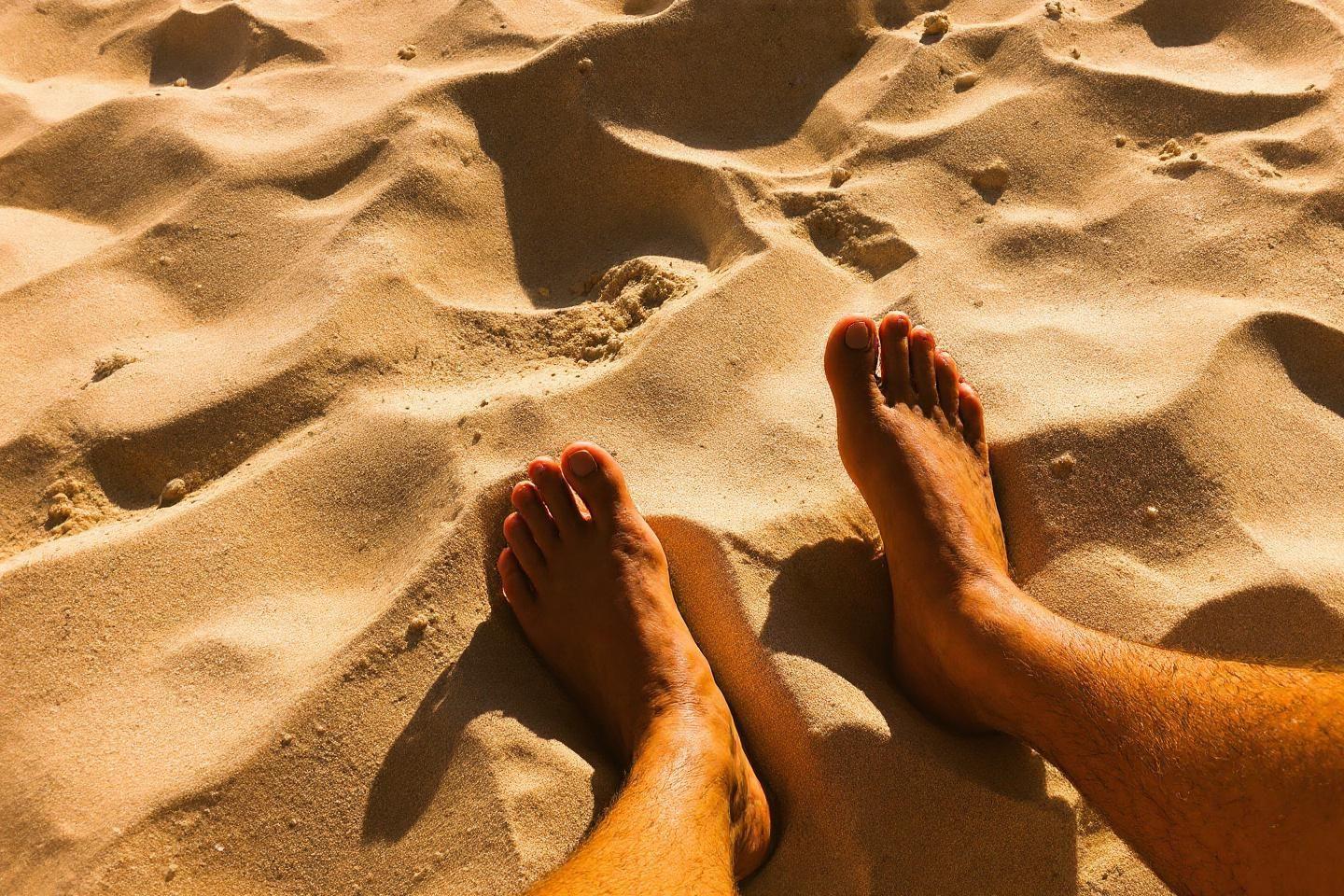Article at a glance
Walking barefoot on various natural surfaces offers multiple benefits for physical and mental health.
- Sensory stimulation: Activates nerve endings in the feet, improving balance and proprioception.
- Muscle strengthening: Engages muscles that are not normally used, strengthening the arch of the foot.
- Circulatory improvement: Promotes venous return and reduces the feeling of heavy legs.
- Energy connection: Earthing could reduce inflammation and improve sleep, according to Some studies.
- Meditative practice: develops a deeper connection with your body and the environment.
Walking barefoot on various natural surfaces is gaining popularity for its multiple health benefits. This ancient practice, long neglected with urbanization, is making a strong comeback in our modern lifestyles. Let's explore together why removing your shoes can transform your physical well-being and how to adopt this habit safely.
The surprising benefits of walking barefoot
Walking without shoes naturally activates the nerve endings in the feet, true sensory receptors that are often overlooked. This stimulation strengthens proprioception—the awareness of our body's position in space—and significantly improves our balance. The different parts of the human foot contain thousands of sensory receptors that are activated by direct contact with the ground.
On a muscular level, walking barefoot engages muscles that are usually underused when we wear shoes. The small intrinsic muscles of the foot work harder, strengthening the arch and preventing problems such as flat feet. The calf and leg muscles also develop differently, promoting a more natural gait.
On a circulatory level, walking without shoes stimulates blood circulation in the lower limbs. The natural movements of the bare foot facilitate venous return and reduce the feeling of heavy legs. This improved circulation contributes to better tissue oxygenation and more efficient elimination of toxins.
Direct contact with the ground also has unexpected energetic benefits. According to some theories, connection with the earth (earthing or grounding) allows for an exchange of electrons between the ground and the body. Preliminary studies suggest this phenomenon may reduce chronic inflammation and improve sleep quality, although more research is needed.

How to start walking barefoot safely
To adopt this practice safely, a gradual approach is essential. Start with short sessions of 5 to 10 minutes on soft surfaces like grass or sand. Your feet, accustomed to the protection of shoes, must gradually adapt to the new sensations and develop natural resistance.
Here are the recommended steps for a smooth start:
- Start on soft, clean surfaces (grass, sand, domestic floors)
- Gradually increase the duration of sessions
- Gradually diversify the terrain (smooth pebbles, forest paths)
- Stay attentive to your body's signals and respect its limits
- Examine your feet after each session to detect possible injuries
The transition to barefoot walking may be accompanied by slight muscle pain, a sign that your body is working differently. These sensations are normal as long as they remain moderate and disappear quickly. On the other hand, any acute or persistent pain should alert you.
For potentially dangerous environments or for first-time experiences, minimalist shoes represent a good compromise. These ultra-thin shoes offer basic protection while preserving the sensation of natural walking.
| Surface | Difficulty Level | Specific Benefits |
|---|---|---|
| Grass | Beginner | Gentle massage, contact with nature |
| Sand | Beginner to Intermediate | Intense muscle strengthening, natural exfoliation |
| Smooth pebbles | Intermediate | Stimulation of reflexology points |
| Trails Foresters | Advanced | Complete connection with nature, development of agility |
Essential Precautions and Contraindications
Despite its many benefits, walking barefoot is not suitable for all situations or all individuals. People with diabetes should consult their doctor before attempting it, as their reduced plantar sensitivity increases the risk of undetected injuries. Likewise, people with immune system problems should take extra precautions.
Certain environments should be avoided at all costs when walking barefoot:
- Potentially contaminated urban areas (broken glass, garbage)
- Extremely hot floors in summer or cold floors in winter
- Unfamiliar terrain that may harbor stinging plants or dangerous objects
- Areas frequented by animals where parasites may be present
After each barefoot walking session, pay special attention to foot hygiene. Careful cleaning followed by thorough drying prevents infections and skin problems. Regularly inspect your feet for blisters, cuts, or irritations that may require care.
Moisturizing the skin on your feet also becomes more important when walking barefoot regularly. The skin naturally thickens to protect itself, but can tend to dry out or crack without proper care.
Integrate barefoot walking into your daily routine
To fully benefit from this practice, gradually integrate it into your routine. Start at home by simply removing your shoes as soon as possible. Daily barefoot movement indoors is already a great start.
Take advantage of natural spaces during your outings to experience different sensations. Each type of ground—fresh grass, warm sand, damp earth—offers unique stimuli and varied benefits. This diversity enriches the sensory experience and maximizes the benefits for your body.
Think of barefoot walking as a mindfulness practice. By focusing your attention on the sensations felt with each step, you develop a deeper connection with your body and the environment. This meditative dimension adds additional therapeutic value to physical exercise.
If you have children, encourage them to explore the world barefoot in safe environments. Their developing feet benefit greatly from this freedom of movement and sensation, contributing to more harmonious growth of their musculoskeletal system.





Leave a comment
This site is protected by hCaptcha and the hCaptcha Privacy Policy and Terms of Service apply.